Beachy Head, an iconic headland on the southern coast of England, has captivated hearts and minds for centuries. Its towering white cliffs, dramatic coastline, and rich history have made it a beloved destination for travelers, artists, and historians alike. Join us as we delve into the fascinating world of Beachy Head, exploring its historical significance, geographical features, and the myriad ways it continues to inspire.
From its role in maritime battles to its poignant connection to literature and folklore, Beachy Head has a story to tell. Its sheer cliffs, formed over millions of years by the relentless forces of erosion, stand as a testament to the power of nature. And as we wander along its scenic trails, we’ll uncover the secrets of its geology, ecology, and the diverse wildlife that calls this extraordinary place home.
Historical Significance: Beachy Head
Beachy Head has a rich and storied past, playing a significant role in maritime history and inspiring countless cultural and literary references.
As a prominent landmark along the English Channel, Beachy Head has witnessed numerous naval battles and shipwrecks throughout the centuries. In 1066, it was the site of the Battle of Hastings, where William the Conqueror’s Norman army defeated the Anglo-Saxon forces led by King Harold II, marking a turning point in English history.
Maritime History
Beachy Head’s strategic location made it a crucial point of defense for England. During the Napoleonic Wars, a series of coastal fortifications were built along the headland, including the iconic Belle Tout Lighthouse, to protect against potential French invasions.
The treacherous waters surrounding Beachy Head have claimed countless ships over the years. The wreck of the East Indiaman ship “Halsewell” in 1786, with the loss of over 200 lives, is one of the most famous maritime disasters associated with the area.
Cultural and Literary References
Beachy Head’s dramatic cliffs and stunning views have captivated artists, writers, and musicians alike. The headland has been immortalized in paintings by J.M.W. Turner and Claude Monet, and featured in literary works by Virginia Woolf, Rudyard Kipling, and Oscar Wilde.
The tragic beauty of Beachy Head has also inspired countless folk tales and legends. One such legend tells of a young woman named “Nellie Dean” who threw herself from the cliffs after being jilted by her lover. Her ghost is said to haunt the headland, forever searching for her lost love.
Geographical Features
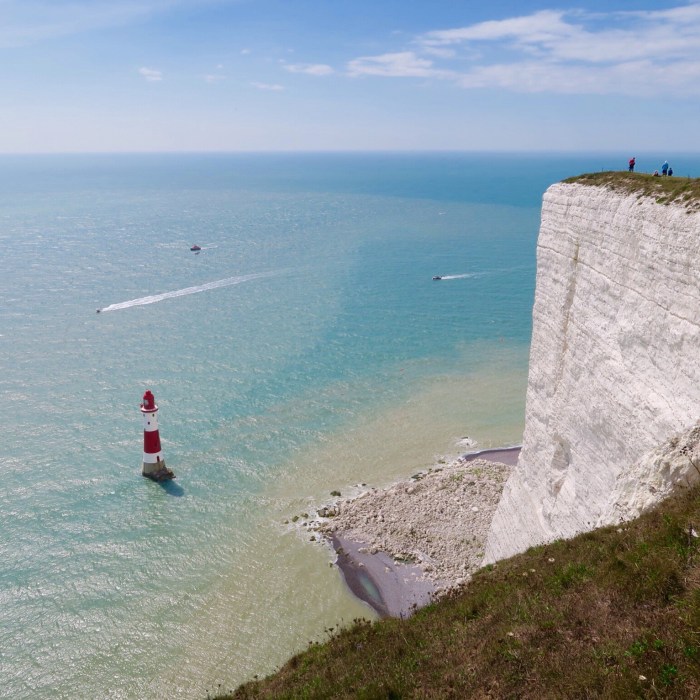
Beachy Head, a prominent headland in East Sussex, England, is renowned for its dramatic physical characteristics. The area showcases a combination of towering chalk cliffs, secluded beaches, and intriguing rock formations.
Beachy Head’s towering chalk cliffs are a sight to behold, but for a change of pace, explore the Atlanta BeltLine , a 22-mile loop of trails and parks that encircles the city. The BeltLine is a great way to experience Atlanta’s urban side while still enjoying the outdoors, and it’s a perfect complement to a day trip to Beachy Head.
The cliffs of Beachy Head, formed from soft chalk, rise majestically to a height of over 530 feet (162 meters), making them the highest chalk sea cliffs in the United Kingdom. These imposing cliffs, shaped by centuries of erosion, present a breathtaking spectacle, especially when viewed from the nearby coastal towns of Eastbourne and Seaford.
Geology and Ecology
The geology of Beachy Head is predominantly chalk, a soft sedimentary rock formed from the accumulation of microscopic marine organisms over millions of years. The chalk cliffs have been sculpted by the relentless forces of erosion, resulting in the formation of caves, arches, and stacks, adding to the area’s geological intrigue.
The ecological diversity of Beachy Head is equally impressive. The cliffs provide nesting sites for various seabirds, including guillemots, razorbills, and kittiwakes. The surrounding waters are rich in marine life, supporting a diverse range of fish species, seals, and dolphins.
Impact of Erosion and Natural Forces
Beachy Head is constantly subjected to the erosive power of wind, waves, and rain. These forces have gradually shaped the coastline, resulting in the formation of the iconic cliffs and beaches. However, the erosion also poses a threat to the stability of the cliffs, leading to occasional rockfalls and landslides.
The impact of natural forces on Beachy Head is evident in the ever-changing landscape. Storms and high tides can cause significant damage to the cliffs, altering their shape and height. Despite these challenges, Beachy Head remains a testament to the resilience of nature, adapting to the relentless forces that shape its surroundings.
Tourism and Recreation
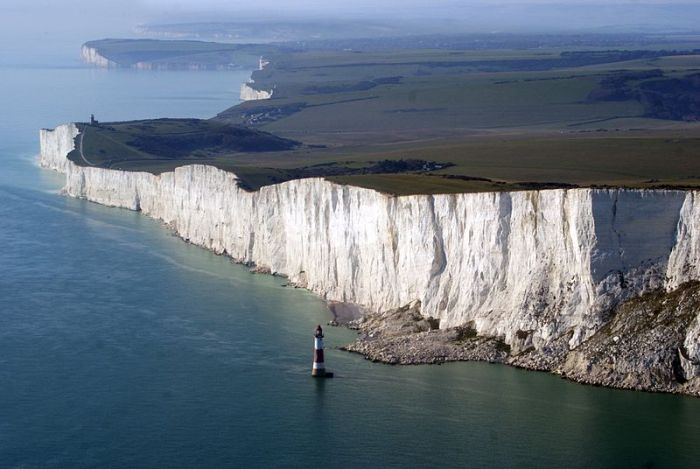
Beachy Head offers a range of recreational activities for visitors of all ages. Its stunning natural beauty attracts tourists who enjoy hiking, sightseeing, and fishing.
Visitor Facilities
The site has ample parking facilities, ensuring easy access for visitors. Several well-maintained trails wind through the area, providing access to various viewpoints. These trails are suitable for hikers of all levels, from beginners to experienced adventurers.
Safety Precautions
While Beachy Head is a relatively safe destination, it’s crucial for visitors to adhere to certain safety regulations. The cliffs are high and can be dangerous, so staying within designated areas and following marked trails is essential. Visitors are advised to wear appropriate footwear and clothing and be aware of potential hazards like slippery surfaces or strong winds.
Conservation and Preservation
Beachy Head is a designated Site of Special Scientific Interest (SSSI) and Special Protection Area (SPA) due to its geological and ecological importance. Conservation efforts focus on protecting the fragile chalk cliffs, unique flora, and abundant birdlife.
The National Trust, a conservation organization, owns and manages Beachy Head. They implement measures to control erosion, maintain habitats, and promote responsible tourism. They also work with local partners to reduce pollution and protect wildlife.
Wildlife Protection, Beachy head
Beachy Head is home to a variety of seabirds, including guillemots, razorbills, and kittiwakes. These birds nest on the cliffs during the breeding season, and conservation efforts aim to minimize disturbance and protect their nesting sites. Additionally, the area is an important feeding ground for marine mammals such as seals and dolphins.
Art and Culture
Beachy Head has captured the imagination of artists and creatives for centuries, inspiring a rich collection of literary, artistic, and photographic works.
Literature
In literature, Beachy Head has often been depicted as a place of solitude, contemplation, and even despair. William Wordsworth’s poem “Ode: Intimations of Immortality” evokes the headland’s towering presence and its connection to the sublime. Virginia Woolf’s novel “To the Lighthouse” uses Beachy Head as a backdrop for themes of loss, grief, and the passage of time.
Painting
Artists have been drawn to Beachy Head’s dramatic landscapes, with its white cliffs, crashing waves, and panoramic views. J.M.W. Turner’s iconic painting “The Wreck of a Transport Ship” captures the headland’s perilous nature, while Eric Ravilious’s “Beachy Head from Birling Gap” conveys its serene beauty.
Photography
In the realm of photography, Beachy Head has become a popular subject for both amateur and professional photographers. Its stunning vistas and rugged coastline offer endless opportunities for capturing breathtaking images. Photographers like Ansel Adams and Edward Weston have produced memorable photographs of the headland, showcasing its grandeur and its ever-changing moods.
Folklore and Legends
Beachy Head has a rich history of folklore and legends that have shaped its perception and experience over the centuries. These stories have been passed down through generations, adding an element of mystery and enchantment to the landscape.
One of the most famous legends associated with Beachy Head is that of the “White Lady.” According to the tale, the White Lady is the ghost of a young woman who was jilted by her lover and threw herself off the cliffs in despair. Her ghost is said to haunt the area, appearing as a figure dressed in white. Some believe that seeing the White Lady is a sign of bad luck or impending doom.
Local Folklore
- The Smugglers’ Caves: Beachy Head’s caves have long been associated with smuggling activities. Legends tell of secret tunnels and hidden chambers used by smugglers to hide their contraband.
- The Devil’s Punchbowl: A large natural depression on the beach below Beachy Head, said to have been created by the devil’s footprint when he was thrown out of heaven.
- The Black Dog: A ghostly black dog is said to roam the cliffs, a harbinger of misfortune or death.
These legends have had a profound impact on the perception and experience of Beachy Head. They have added an element of mystery and intrigue to the landscape, making it a place of both beauty and foreboding.
Notable Events
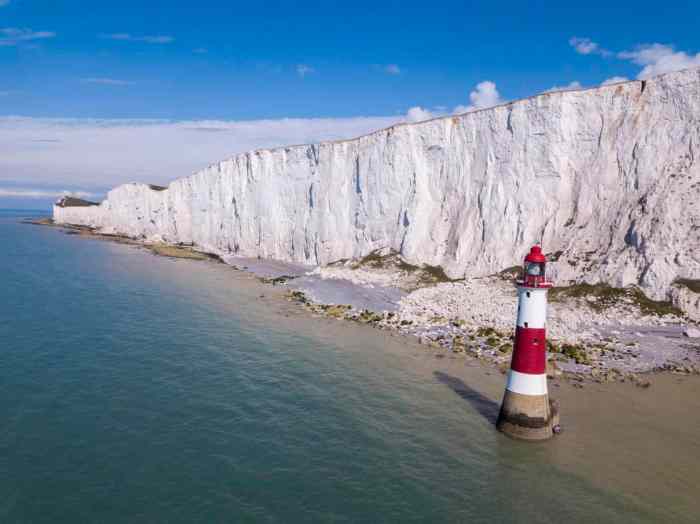
Beachy Head has witnessed several significant events throughout history, including battles, shipwrecks, and tragedies.
Beachy Head, the iconic white cliffs of England, offers breathtaking views of the English Channel. Its sheer height and dramatic coastline make it a popular destination for hikers and nature enthusiasts. While in the area, consider a visit to the historic Ashford Castle , a luxurious hotel nestled in the heart of the countryside.
With its stunning architecture and picturesque surroundings, Ashford Castle provides a tranquil retreat after a day exploring Beachy Head’s natural wonders.
The most notable event was the Battle of Beachy Head in 1690, during the Nine Years’ War. A combined French and English fleet defeated a Dutch and English fleet, resulting in the loss of several ships and heavy casualties.
Shipwrecks
Beachy Head’s treacherous cliffs and unpredictable currents have led to numerous shipwrecks over the centuries.
- In 1703, the warship HMS Victory sank off Beachy Head, with the loss of over 1,000 lives.
- In 1857, the passenger ship SS Great Britain ran aground at Beachy Head, resulting in the loss of 18 lives.
Tragedies
Beachy Head has also been the site of numerous tragedies, including suicides and accidents.
- In 1983, 17-year-old David Cheeseman fell to his death from the cliffs, inspiring the song “The Killing Moon” by Echo & the Bunnymen.
- In 2002, a teenage couple jumped to their deaths together, highlighting the issue of suicide prevention.
These events have contributed to Beachy Head’s reputation as a place of both beauty and tragedy, attracting both tourists and those seeking a peaceful end.
Comparative Analysis
Beachy Head shares similarities with other coastal landmarks and geographical formations worldwide. Its iconic white cliffs resemble those of the Seven Sisters in Sussex, England, and the dramatic sea stacks of Étretat, France. Like Beachy Head, these formations showcase the power of coastal erosion and the enduring beauty of nature.
In terms of historical significance, Beachy Head holds a unique place in maritime history. Its treacherous waters have witnessed numerous shipwrecks, including the tragic sinking of the SS Mont-Blanc in 1917. The lighthouse at Beachy Head, built in 1902, stands as a testament to the dangers faced by mariners and the importance of coastal navigation.
Regarding tourism appeal, Beachy Head attracts a significant number of visitors due to its stunning scenery, dramatic cliffs, and historical significance. It offers opportunities for hiking, birdwatching, and simply enjoying the beauty of the natural surroundings. Similar to the Giant’s Causeway in Northern Ireland and the Cliffs of Moher in Ireland, Beachy Head is a popular destination for tourists seeking breathtaking coastal views and an escape from the hustle and bustle of urban life.
Despite these similarities, Beachy Head possesses unique characteristics that set it apart from other coastal landmarks. Its sheer height, reaching 162 meters (531 feet), makes it one of the highest chalk sea cliffs in the United Kingdom. The presence of the Belle Tout Lighthouse, built in 1834, adds to the area’s historical charm and architectural interest. Moreover, the surrounding South Downs National Park provides a picturesque backdrop for exploring the area and enjoying a variety of outdoor activities.
Local Economy

Beachy Head plays a significant role in the local economy, particularly in the tourism and recreation sectors. The iconic landmark attracts a large number of visitors each year, generating revenue for businesses and creating employment opportunities in the area.
Beachy Head, with its iconic white cliffs and breathtaking views, offers a unique glimpse into the power of nature. While its beauty is undeniable, it’s not the only place where architecture and nature converge. Arcosanti , an experimental city in Arizona, seamlessly integrates human structures into the surrounding landscape.
Its organic forms and sustainable design create a harmonious balance that echoes the grandeur of Beachy Head, reminding us of the potential for architecture to coexist with the natural world.
One of the most notable impacts of Beachy Head on the local economy is the tourism industry. The dramatic cliffs and stunning views make it a popular destination for day-trippers and tourists from around the world. Many businesses in the area, such as hotels, restaurants, and tour operators, rely on tourism revenue to sustain their operations.
Tourism and Recreation
The tourism industry in the Beachy Head area is supported by a range of businesses and services that cater to the needs of visitors. These include:
- Hotels and guesthouses
- Restaurants and cafes
- Tour operators
- Gift shops and souvenir stores
- Activity providers (e.g., guided walks, boat tours)
These businesses provide employment opportunities for local residents and contribute to the overall economic prosperity of the area.
Employment Opportunities
In addition to the direct employment opportunities in the tourism and recreation sectors, Beachy Head also indirectly supports jobs in other industries. For example, the construction industry benefits from the development of new tourist facilities and infrastructure, while the retail sector benefits from increased consumer spending by visitors.
Economic Challenges
While Beachy Head is a major economic asset for the local area, it also poses some challenges. One of the main challenges is the seasonal nature of tourism. During the summer months, the area is bustling with visitors, but during the winter months, there is a significant decline in tourism activity. This can lead to fluctuations in employment and income for businesses that rely on tourism revenue.
Another challenge is the potential for erosion and damage to the cliffs. If the cliffs were to become unstable or unsafe, it could have a devastating impact on the local economy, as tourism would be severely affected.
Future Prospects
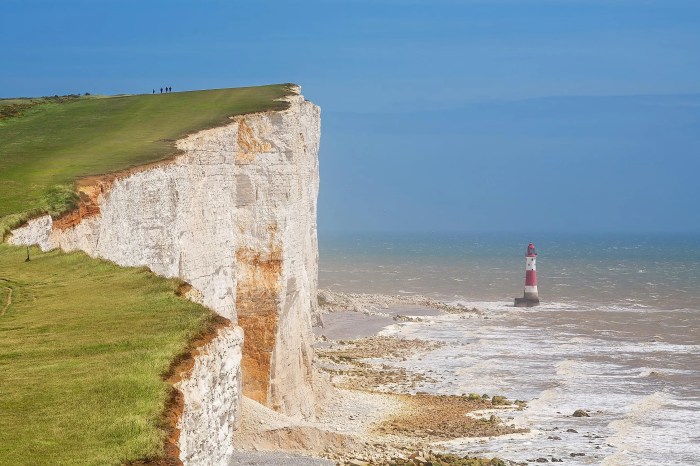
Beachy Head faces both opportunities and challenges in the years to come. Conservation efforts will play a crucial role in preserving the area’s natural beauty and ecological significance. Sustainable tourism practices will be essential to balance the needs of visitors with the protection of the environment. Climate change poses a significant threat to Beachy Head, and adaptation strategies will be necessary to mitigate its impacts.
Conservation
Continued conservation efforts are vital to protect the unique flora and fauna of Beachy Head. Habitat restoration, invasive species management, and pollution control will be essential to maintain the ecological integrity of the area. Partnerships between conservation organizations, landowners, and local communities will be crucial for the long-term success of these efforts.
Tourism Management
Tourism is a major economic driver for Beachy Head, but it must be managed sustainably to avoid negative impacts on the environment and the visitor experience. Measures such as limiting visitor numbers, promoting responsible behavior, and investing in infrastructure will be necessary to ensure the long-term viability of tourism in the area.
Climate Change
Climate change poses a significant threat to Beachy Head. Rising sea levels, coastal erosion, and changes in weather patterns could have devastating impacts on the area’s natural and cultural heritage. Adaptation strategies, such as beach nourishment, habitat relocation, and infrastructure upgrades, will be necessary to mitigate these impacts and ensure the future of Beachy Head.
Last Recap
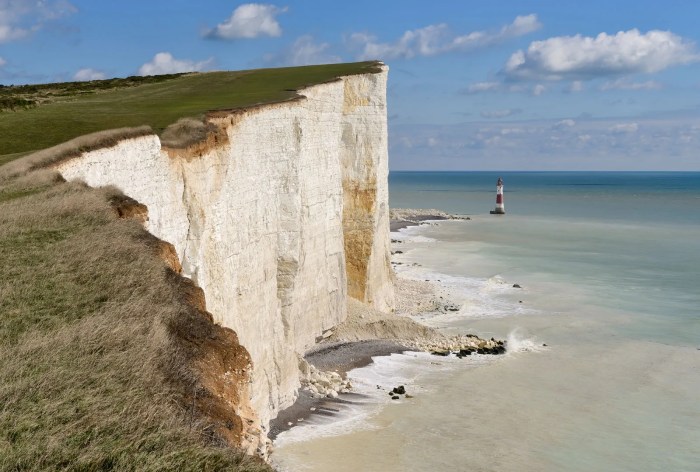
Our journey through Beachy Head has been a captivating exploration of a landscape that has shaped history, inspired creativity, and continues to enchant visitors from far and wide. As we bid farewell to this majestic headland, let us remember its timeless beauty, its enduring legacy, and the countless stories it holds within its embrace. May Beachy Head forever remain a source of wonder, inspiration, and a reminder of the indomitable spirit of nature.
FAQ Summary
Is Beachy Head a popular tourist destination?
Yes, Beachy Head is a popular tourist destination, attracting visitors with its stunning scenery, historical significance, and recreational opportunities.
What is the best time to visit Beachy Head?
The best time to visit Beachy Head is during the spring or autumn months when the weather is generally milder and more pleasant for outdoor activities.
Are there any safety precautions I should take when visiting Beachy Head?
Yes, it’s important to take safety precautions when visiting Beachy Head, including staying away from the cliff edge, being aware of changing weather conditions, and following any instructions from park rangers or lifeguards.